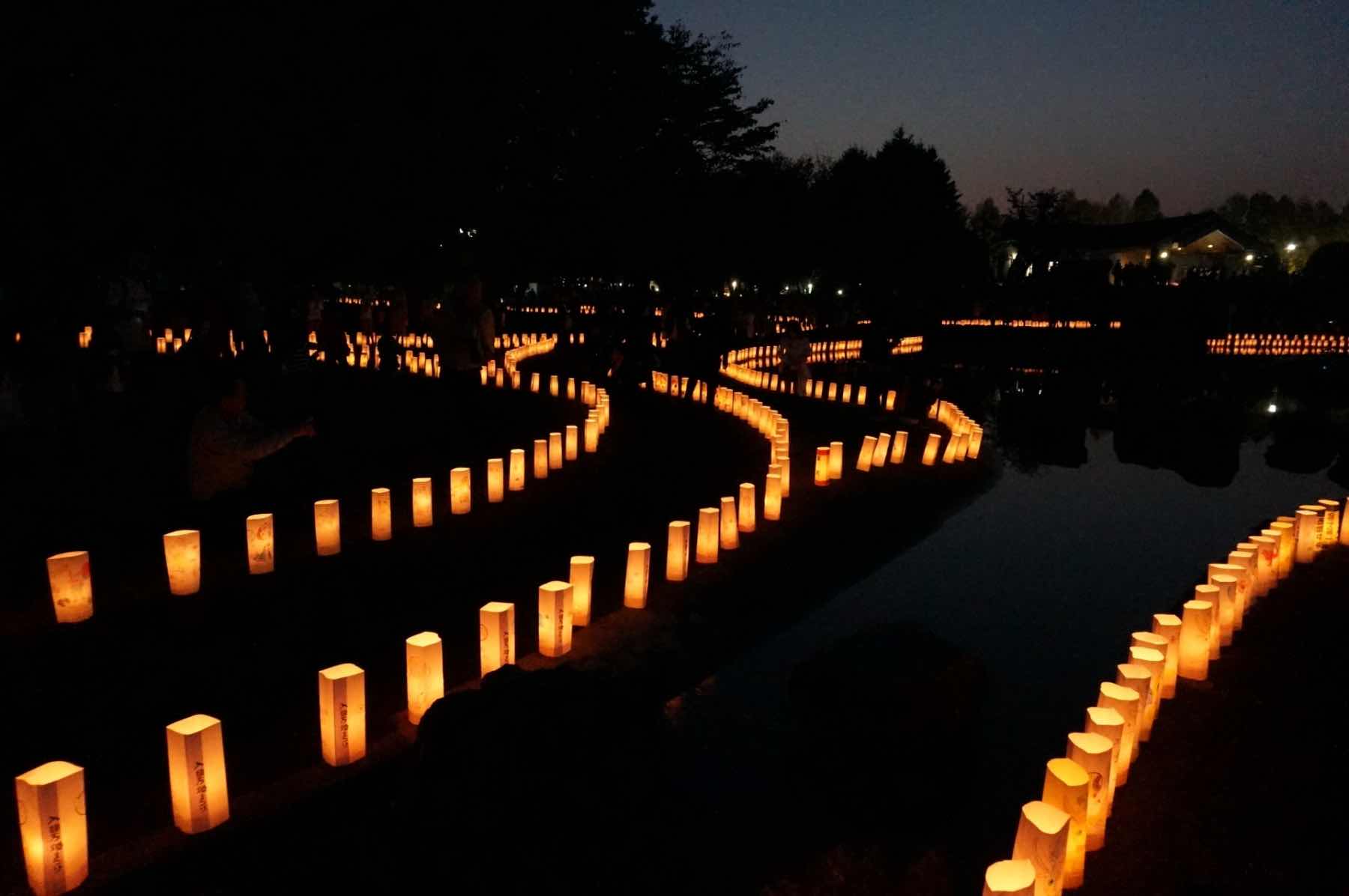Ghost Stories and Superstitions: Summer in Japan Gets Spooky!
When you think about summer in Japan, the first things that might come to mind are festivals, fireworks, and shaved ice, but there’s more to it than that. When the nights get hot and sticky, something else starts creeping in: ghost stories, strange superstitions, and whispers of the supernatural. It’s the season when yūrei and yōkai feel closest, slipping into late-night conversations, TV specials, and even everyday traditions.
From tales that chill your spine to old customs that still make people think twice before going for a swim during Obon, Japan’s summer folklore is packed with eerie charm. You don’t have to believe in vengeful spirits or sea monsters to enjoy it, and once you get a taste for them, it’s hard not to get pulled into the mystery!
Summer Storytelling Traditions in Jpan
There’s something about the thick, still air of a Japanese summer night that makes ghost stories (怪談, kaidan) hit harder. Maybe it’s the cicadas buzzing in the background, or the way the heat just won’t let up, but for generations, people in Japan have leaned into this atmosphere by gathering to share scary tales, not just for the thrill, but because of the Japanese folk belief that a good chill down your spine might help you feel cooler (if only for a moment!).
This tradition of sharing scary stories during sweltering nights dates back to the Edo period (1603 – 1868). One of the most iconic traditions tied to this is Hyakumonogatari Kaidankai (百物語怪談会), which translates to “A Gathering of One Hundred Supernatural Stories.” The rules are simple: you sit in a dark room lit by a hundred candles and take turns telling ghost stories. After each story, one candle is blown out.
The idea is that by the end, the room is completely dark, and if you're brave enough to make it that far, something supernatural just might appear. It started among samurai as a test of courage (肝試し kimodameshi, or “test your liver,” as courage is colloquially linked to the liver in Japanese) but quickly spread to regular households during the Edo period. Think of it as the ultimate group horror challenge before movie nights were a thing!
Today, the tradition lives on in all kinds of ways. Summer horror specials are a staple on Japanese TV, complete with reenactments of real ghost encounters and haunted locations. There are also seasonal horror events in theme parks, dedicated horror manga series released in summer, and even spooky exhibits at museums. While most people probably aren’t playing the full 100-candle game anymore, the spirit of it, gathering to swap spine-tingling stories under the summer heat, still remains alive.
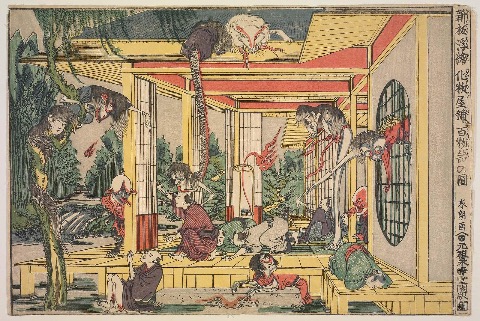
The Beliefs That Linger in the Heat
Japan has no shortage of interesting superstitions, and summer seems to bring a few extra into the spotlight. Some are tied to seasonal traditions like Obon, while others come from old folk wisdom passed down through generations. And while not everyone takes them seriously today, they still pop up in conversations and traditions.
🏊 Avoid Swimming During Obon
This superstition says that if you take a dip in the ocean or river around this time, you might get pulled under by spirits, and not the friendly kind!
Obon, usually celebrated in mid-August across most of Japan, is a time when it’s believed that the spirits of ancestors return to visit. But not all of them are just dropping by to say hello. Folk belief warns that angry ghosts (onryō) and lost souls with no relatives (muenbotoke) might also be wandering. That’s why people say swimming during this week could get you “spirited away.”
There’s also a more practical side to it: late July to mid-August marks peak jellyfish season, and it’s also when Japan sees more typhoons, high tides, and rough seas. So even if you don’t believe in vengeful spirits, it’s probably best to play it safe in the water during this time of year!
🤐 No Whistling at Night
According to old-school beliefs in Japan, whistling at night might attract snakes, or worse, thieves or wandering spirits. The idea is that whistling sends out a call to the unknown, and you never really know who (or what) might answer!
There’s a more grounded theory, too. Back in the day, it’s said that thieves used whistles to signal each other at night, so whistling after sunset became something to avoid. Over time, that warning may have morphed into a ghostly cautionary tale instead. Either way, if you’re heading out for a night stroll, maybe save your best tunes for daylight hours!
🧺 Don’t Hang Laundry at Night
Leaving your laundry out overnight might seem harmless, but in Japan, it’s something many people avoid. Hanging clothes after dark is said to attract wandering spirits. The idea is that ghosts drifting by might mistake the clothes for human figures and decide to pay a visit, or worse, attach themselves to them!
Some also say it’s just plain bad luck to let your clothes soak up the nighttime energy. And let’s be honest: bringing in damp laundry the next morning that smells like dew and ghost vibes isn’t exactly appealing.
Of course, from a practical standpoint, it’s also just not the best drying time. Humidity is high in summer, and night breezes don’t do much. So between superstition and soggy T-shirts, most people just wait until morning or dry clothes inside.
But luckily, you can protect yourself from some of these things with fūrin, the little glass wind chimes you’ll hear tinkling all summer long. Their soft, high-pitched sound is believed to ward off bad energy and unwanted spirits. In old times, people thought that the clear, sharp sound helped purify the space around them, acting as a kind of spiritual alarm system.
These chimes are often hung by windows or doorways where the breeze can hit them and just hearing one can make the heat feel a little lighter. They’re beautiful, nostalgic, and (according to some) a low-effort way to keep the summer spooks at bay!
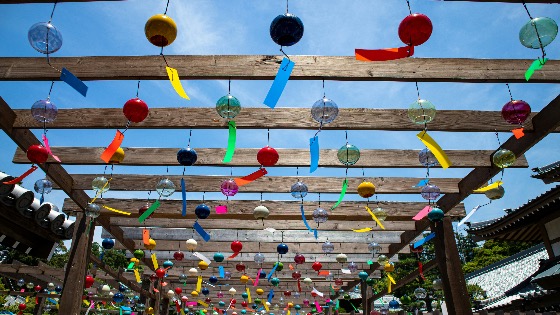
Japan’s Favorite Ghost Stories
Not all Japanese ghosts and monsters wait for Halloween to show up. In fact, summer is the peak season for spooky tales and encounters featuring yūrei and yōkai!
Yūrei are closer to what most people think of as ghosts: spirits of the dead who haven’t moved on, often because of betrayal, revenge, or unfinished business. They’re usually portrayed in long white funeral robes with long black hair, and their presence is often tied to strong emotions or unresolved trauma from their past lives.
Yōkai, on the other hand, cover a much wider range of supernatural beings, from creepy and unsettling to quirky and whimsical. Some yōkai are nature spirits, others are transformed animals or even haunted household objects. Not all yōkai are dangerous, some are just mischievous or odd, like the karakasa-obake, a hopping umbrella with one eye and a long tongue. But others, especially the ones tied to summer legends, definitely lean into the eerie side!
Oiwa – Yotsuya Kaidan (“Ghost Story of Yotsuya”)
One of Japan’s most famous ghost stories, Yotsuya Kaidan (四谷怪談), tells the chilling tale of Oiwa. After being betrayed by her husband and tricked into using a poisoned beauty cream, her face becomes horribly disfigured. When she sees her ruined reflection, grief and rage take over, dying in agony.
But she doesn’t stay gone for long. Oiwa returns as an onryō (a vengeful spirit), haunting her husband with distorted mirror images, hallucinations, and full-blown psychological torment until his downfall.
Oiwa’s story has been adapted into countless kabuki plays, films, and manga. But here’s where it gets a little extra scary: some believe her ghost still holds a grudge. So much so that it’s now tradition for actors and directors to visit Oiwa’s shrine and ask for her blessing before performing a play or starting a new project. Some even say skipping the ritual invites bad luck or even injuries during production, just one more reason her legend lives on!
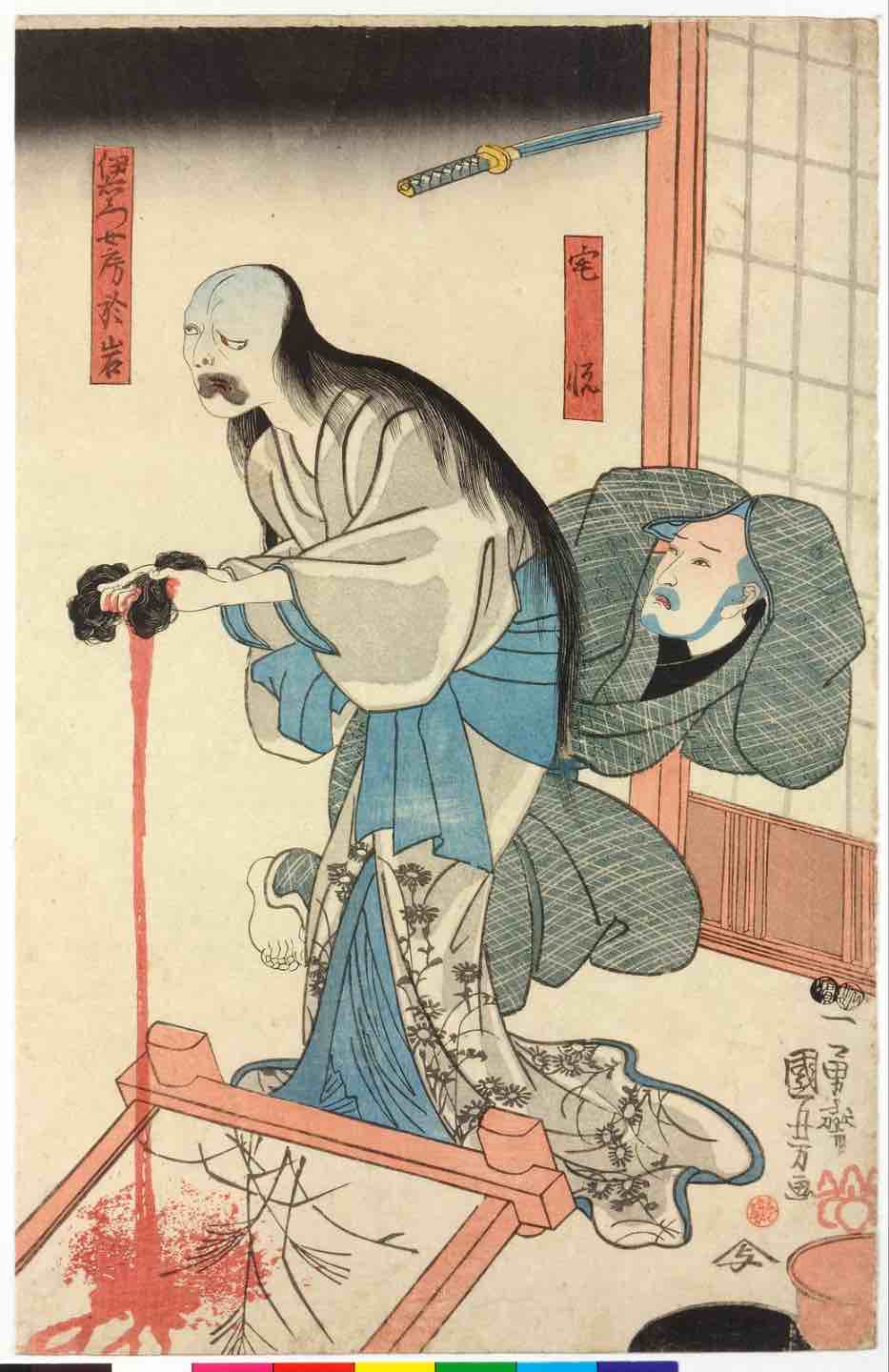
Okiku – Banchō Sarayashiki (“The Dish Mansion at Banchō”)
Another classic ghost story, Banchō Sarayashiki (番町皿屋敷), centers on Okiku, a servant who is wrongly accused of breaking, or stealing, one dish from a set of ten valuable plates by the master of the house after she rejects his advances
After being punished and thrown into a well, she comes back as a spirit who obsessively counts plates, “one… two… three…,” until she reaches the missing one and lets out a blood-curdling scream, forever searching for the missing tenth plate. The eerie image of a woman endlessly counting from beyond the grave made this one a classic, and it’s still a popular summer ghost story today.
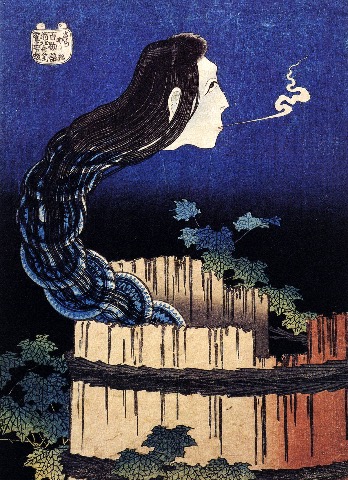
Umibōzu – "Sea Monk"
If you’re taking a ferry or boat this summer, maybe don’t look too hard at the horizon! Umibōzu (海坊主) is a sea spirit that’s said to appear suddenly on quiet waters, breaking ships and dragging sailors to a deep watery end. Some say it has a huge shadowy form with bulging eyes and a bald head (hence the name), but no one really agrees on what it looks like.
It’s the kind of creature that makes you think twice before trusting a quiet sea. Maybe that’s why tales of Umibōzu still bubble up along Japan’s coasts; part cautionary tale, part reminder that the ocean always keeps a few secrets of its own!
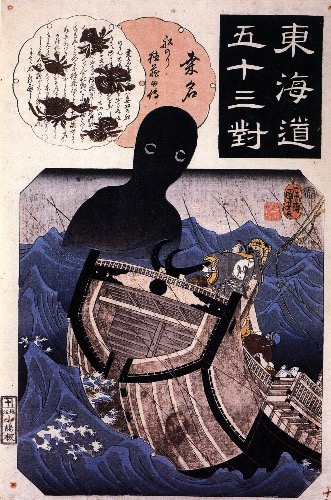
Japanese Folklore in Pop Culture
In Japan, certain places tend to show up again and again in scary stories: abandoned hospitals, forgotten shrines, empty schools, and rural tunnels with no exit in sight. These aren’t just creepy for atmosphere, they’re seen as spiritually “off-limits” in traditional beliefs.
Places that are in a sense “left behind” isolated, neglected, or tied to death are thought to attract supernatural energy, especially if something tragic happened there. These are the kinds of settings that have fueled countless Japanese urban legends.
Naturally, all of this has made its way into Japanese pop culture. Ghost stories and urban legends are regular features in summer TV specials, horror manga, and movies. Some of Japan’s most iconic horror characters are directly inspired by older tales, like Sadako from Ring, for example, takes inspiration from the tragic ghost of Oiwa: long black hair, a pale face, and a terrifying sense of unresolved rage.
But spooky stories in Japan aren’t all about terror. Anime like Natsume’s Book of Friends lean into the emotional side of yōkai encounters, turning what could be scary into something gentle, nostalgic, and even heartwarming and humorous. Other stories like Mushishi and Spirited Away explore the mysterious beauty of spirits and unseen worlds, while GeGeGe no Kitarō adds a playful twist to classic folklore creatures.
Ghosts and spirits continue to play many roles in Japan’s cultural imagination: some are meant to scare, others to comfort, and many simply spark curiosity. And each summer, as the heat rises, they seem to step a little closer into the spotlight again!
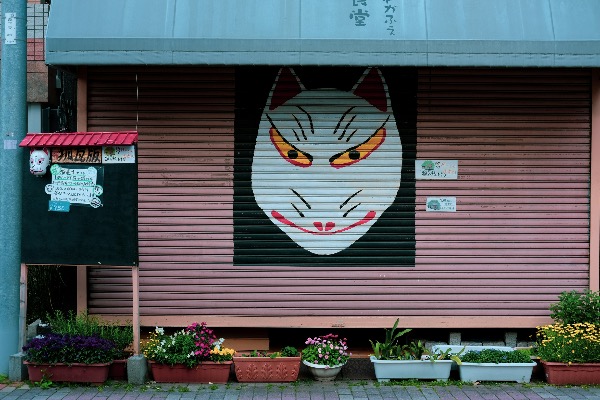
From Old Tales to Everyday Chills
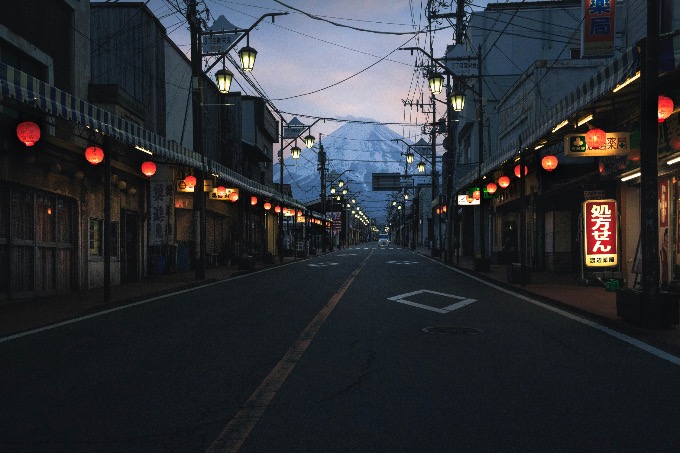
There’s something about summer in Japan that invites the eerie and the otherworldly to come a little closer. From onryō with unfinished business to old superstitions about laundry and whistling, these traditions are still very much present, having simply taken new forms in films, festivals, and casual conversations.
Even if you don’t believe in haunted wells or sea spirits, there’s something fascinating in how these tales continue to shape the mood of the season, and Japanese summers wouldn’t quite be the same without them!
👹 Curious to experience Japan’s folklore up close?
From summer festivals filled with eerie tales to everyday superstitions still whispered today, the country’s culture has plenty to explore beyond the guidebooks! If you’re thinking about spending time and interning in Japan, why not immerse yourself in its traditions while you’re here?
👉 Apply now or get in touch with us to learn how an internship in Japan can become your own story worth telling!

